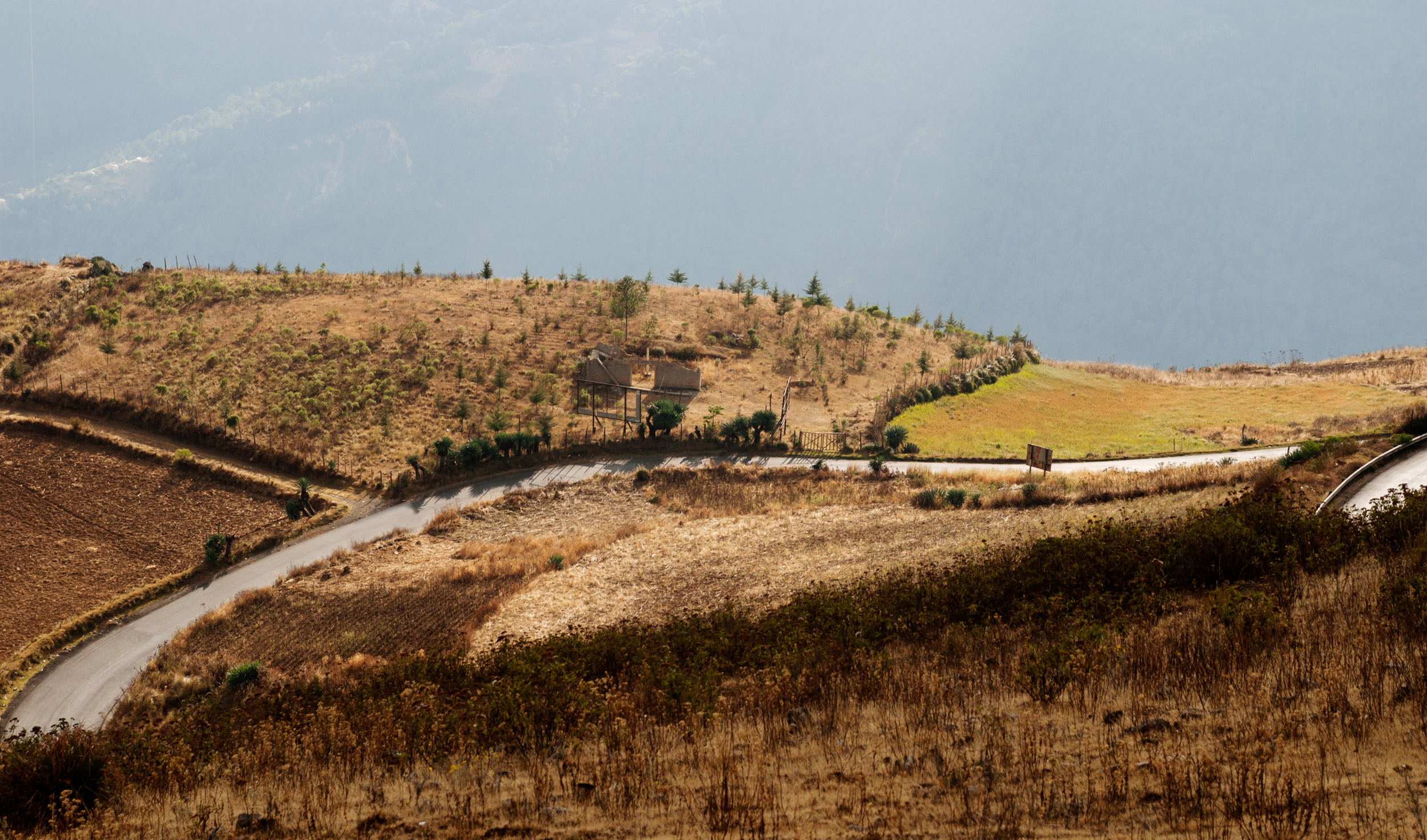Climate change is affecting coffee farmers all over the world, with raised temperatures, drought, changed rainfall patterns, and extreme weather events impacting yields. Among Latin American countries, Guatemala is considered particularly vulnerable to climate change, particularly because of the increased risk of extreme weather events and also because the country’s agriculture is highly dependent on rainfall (Haggar and Schepp 2011).
By 2050, the average temperature in Guatemala is predicted to increase by 2–2.5°C, with reduced rainfall in July–September — the months during which ample rainfall is critical for fruit development. The changing climate will mean that parts of Guatemala, especially the east and south, become unsuitable for coffee growing.
 Picture: Land affected by drought in the foothills of Sierra de los Cuchumatanes, near Huehuetenango.
Picture: Land affected by drought in the foothills of Sierra de los Cuchumatanes, near Huehuetenango.
As average temperatures rise, coffee production will be forced to move to higher elevations where the climate is cooler. Compared with other countries in Central America, Guatemala has more highland areas that could be used for coffee growing when temperatures increase. This partially offsets the effect of increasing temperatures, but the total amount of land suitable for growing coffee is predicted to decrease by 19% in Guatemala by 2050 (Ovalle-Rivera et al 2015).
As mentioned earlier, Guatemalan farmers have suffered from extreme weather events. Hurricanes coming in from the Caribbean cause widespread damage to agricultural land, destroying infrastructure and causing devastating landslides. In 1998, Hurricane Mitch destroyed agricultural land and infrastructure in Guatemala, causing US$550 million of damage (Bucknam et al 2001). In 2005, Hurricane Stan destroyed 20% of the coffee crop, causing losses estimated at US$40 million (GFDRR 2011). At the same time, farmers in eastern regions as well as parts of Huehuetenango have been affected by droughts related to the El Niño phenomenon, which is exacerbated by climate change (FEWS NET 2016).
With climate change comes an increased risk of disease outbreaks — particularly coffee leaf rust, which thrives at higher temperatures. The leaf rust outbreak that began in 2012 had a devastating effect on Guatemala’s coffee industry, reducing yields by as much as 25% (USDA 2015). Since then, farmers have adapted by reducing the numbers of shade plants, using preventative fungicides, and replacing traditional varieties with rust-resistant ones. However, the industry as a whole has been slow to recover, and the disease is well established in Guatemala at altitudes of up to 1,600 meters above sea level (USDA 2019). Climate change has also increased the spread of other fungal diseases in coffee, as well as pests such as nematodes and leaf miners (Haggar and Schepp 2011).